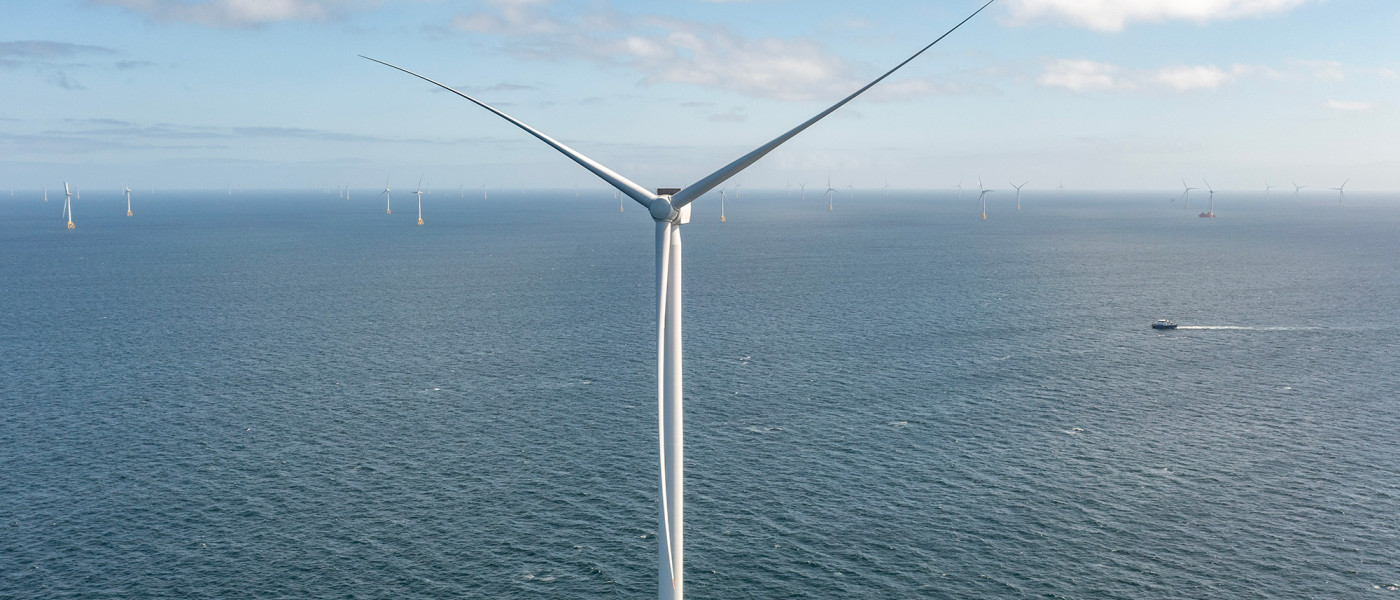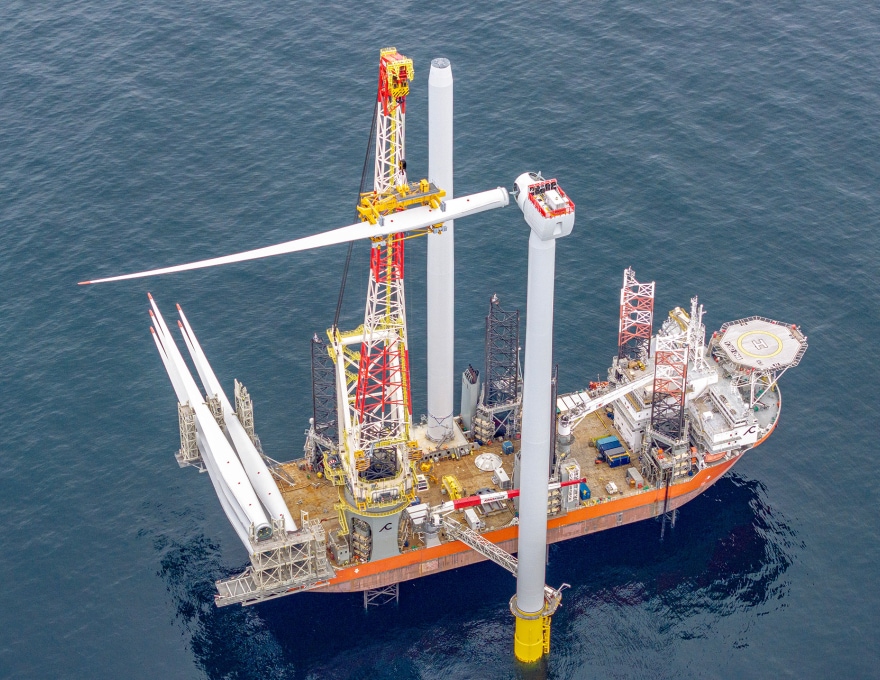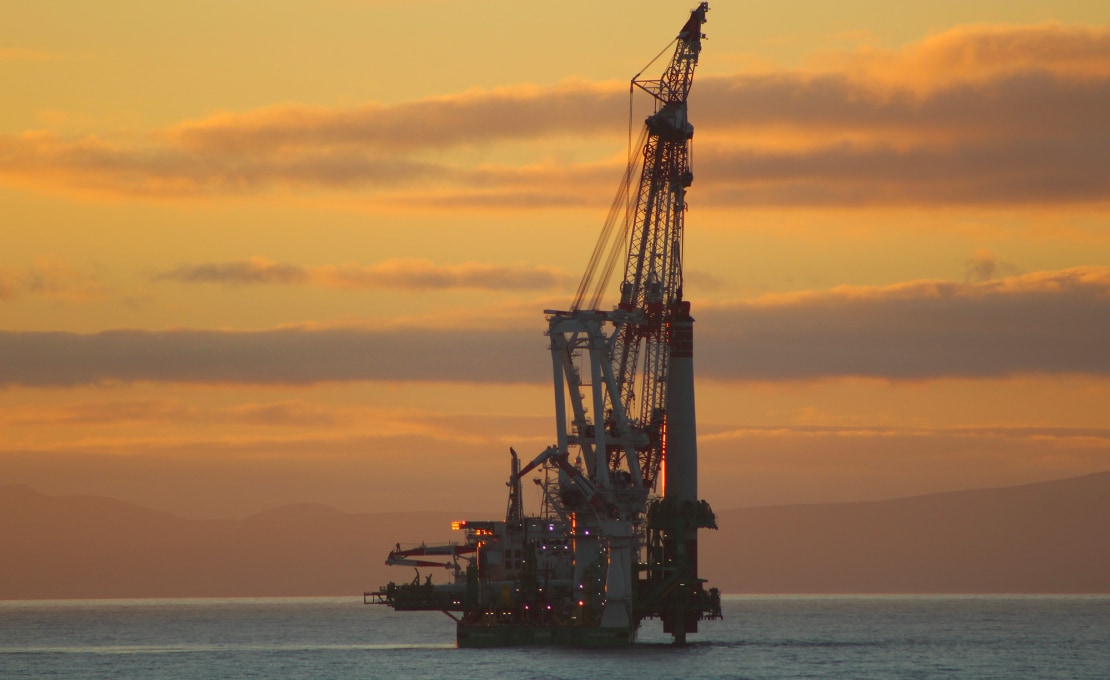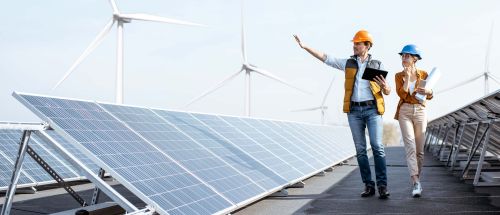Ocean Winds, innovating in clean energy
In the UK, where offshore wind is expected to supply at least one third of the electricity by 2030, Ocean Winds is leading the charge. Its Moray West offshore wind farm off the northeast coast of Scotland will consist of 60 wind turbines with a total generating capacity of 882 MW – a capacity equivalent to the annual electricity consumption of more than 1.3 million homes, or about half the Scottish population – and will be operational in 2025.
The pioneering project in the Moray Firth being built by Ocean Winds – a 50:50 joint venture between EDP Renewables and Engie – not only boasts one of the biggest turbines in the world, a new model built by Siemens Gamesa, but it will also sit on top of the world’s biggest monopiles, the most commonly used foundation for offshore wind turbines.
For those who move the world: Ocean Winds & BNP Paribas
Since 2019, Ocean Winds has been financing, building and operating offshore wind farms around the world. The company makes offshore wind one of the main sources of renewable energy by offering more efficient and sustainable wind energy solutions.
“It's really pushing the boundaries of what's possible in offshore wind,” says James Munro-Brian, the UK Finance Manager for Ocean Winds, which owns a 95% stake in the Moray West project. Just ten years ago, he says, many of the sites that Ocean Winds is developing would not have been considered: they were “too deep, and too difficult – but technology has moved on.
”The Moray West project forms part of a rapidly growing portfolio. "At the moment, we are one of the major developers worldwide with a portfolio of 16 secured wind offshore projects representing almost 18GW,” says Ernesto Vargas Espinosa, Structured & Corporate Finance Director at Ocean Winds. So far, there are three in operation, in Portugal, Belgium and the United Kingdom, together already generating 1.5GW; four under construction with a capacity of 1.9GW; and nine at the development stage for 14.5GW.
Offshore wind represents one of the most promising opportunities for meeting the world’s ambitious climate goals.
Breaking ground with Corporate Power Purchase Agreements
It is not just the technology being used by Ocean Winds that is breaking new ground. So is the innovative £2 billion financing arrangement for the Moray West project in which BNP Paribas took part, which relies on the introduction of Corporate Power Purchase Agreements (CPPAs) with long-term strategic partners for the sale of some of the project’s electricity, rather than relying only on fixed prices guaranteed by the state.
“In simple terms, without that debt funding, the project wouldn't have gone ahead,” argues Munro-Brian, adding that it is very unlikely shareholders would have been able to foot the cash themselves. “Where we're innovating is by selling energy to businesses. Rather than selling 100% of the revenues to the government, we have direct agreements with businesses to sell that energy. This takes advantage of more economically viable agreements with businesses, rather than rely on a government price which was no longer as high as businesses were willing to offer,” he explains.
Alongside 19 other commercial banks, BNP Paribas acted as Mandated Lead Arranger and Hedging Bank in the project finance scheme in which loan repayments are made only from cash flow generated by the project. While the CPPAs account for the commercialisation of more than half of its output, a Contract for Difference (CfD) - a contractual mechanism guaranteeing a set price for electricity to incentivise investments in renewable energy projects in the UK - was secured for another third of the installed capacity.
“The banks are very important to the financing of an offshore wind farm: they really challenge the assumptions to ensure that the project is in the best place it possibly can be, with the most lending possible. Many hours are spent in making sure that the project can finance itself and also repay the debt that we're about to raise,” says Vargas Espinosa.
“BNP Paribas brings a lot of experience with them in investing in offshore wind. And they also bring a lot of other banks with them. So if BNP Paribas is happy, others will be happy too, and we will end up with a better project,” he adds. He points to BNP Paribas’s solid track record in project finance and its broad reach as an international bank when explaining why Ocean Winds chose it as a lender, as well as its overall banking expertise and knowledge of the renewables sector in particular.
Moray West offshore wind farm off the northeast coast of Scotland will consist of 60 wind turbines with a total generating capacity of 882 MW and will be operational in 2025.






